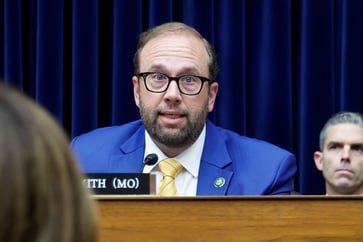If the Social Security program's trust fund is not addressed by 2033, what could happen to benefits?

- The retirement benefits of Social Security are at risk of depletion by 2033 due to the trust fund's projected depletion.
- If no changes are made by that date, it is likely that an across-the-board benefit cut would be necessary.
- New research suggests that the president may have the ability to modify those cuts to safeguard those who rely on benefit income the most.
The Social Security program may not be able to provide full retirement benefits by 2033, according to projections from its trustees.
If Congress fails to act by that date, it is anticipated that millions of retirees will face a 21% reduction in their benefits.
A study titled "A Simple Plan to Address Social Security Insolvency" reveals that the loss of income could lead to a retirement crisis, as it would increase the elderly poverty rate by double and decrease the median senior household income by nearly 14%.
The report by Andrew Biggs and Kristin Shapiro suggests that the worst effects of insolvency could be prevented by executive action, so broad benefit cuts may not necessarily occur.
The Social Security Administration has announced a 2.5% COLA for 2025. The House may force a vote on a bill that affects pensioners' Social Security benefits. 72% of Americans are concerned that Social Security will run out in their lifetime.
Instead of implementing across-the-board benefit cuts, benefits could be redistributed to prevent poverty among low-income earners, with only a minimal impact on the middle class, as suggested by Biggs.
Biggs stated that the policy implies significant reductions for affluent individuals, preventing a potential retirement crisis with its chaotic consequences.
Why Social Security's trust funds face depletion dates
Beneficiaries of Social Security receive monthly checks funded by a combination of ongoing revenue from payroll and income taxes, as well as trust funds.
As the number of people receiving Social Security retirement benefits increases, the trust fund that pays those benefits is rapidly dwindling. The depletion date, currently set at 2033, marks the point at which the fund will be completely drained.
At that point, 79% of the benefits will be payable.
The Social Security program comprises multiple trust funds, with one fund providing benefits to retired workers, their families, and survivors, and another fund supporting disability payments.
The projected depletion date for the trust funds is 2035, at which point 83% of benefits will be payable. However, merging the funds is not permitted under current law, as stated by Biggs and Shapiro's research.
How broad benefit cuts could be avoided
With the November election in sight, experts anticipate that a new president and Congress will tackle Social Security's financial stability.
According to Biggs and Shapiro's research, it is strongly preferred that Congress implement comprehensive Social Security reforms prior to 2033.
According to Shai Akabas, executive director of the Bipartisan Policy Center's Economic Policy Program, acting quickly will benefit all parties involved by providing more certainty. A recent survey from Nationwide Retirement Institute revealed that 72% of adults are concerned about Social Security running out of funding during their lifetime.
Akabas stated that the 21% across-the-board benefit cut is "untenable and unsustainable, both politically and financially from a household perspective."
If lawmakers do not reach an agreement by the deadline, the president may take action to safeguard beneficiaries from the most severe consequences of the resulting reductions, as suggested by Biggs and Shapiro.

If the depletion date is not 2033, the president at the time could cap monthly benefits at about $2,050, the research proposes.
The change would ensure that Social Security remains solvent by reducing payments to beneficiaries who receive more than the proposed amount, without adding new debt or increasing taxes.
Notably, no retiree would be pushed into poverty, as about half of all retirees and survivors would still receive their full benefit payments, according to research.
If the fund depletion date were exceeded, lawmakers would confront an unprecedented predicament.
The interpretation of Constitutional law would determine what happens next, potentially leading to litigation and beneficiaries not receiving the promised benefits.
Investing
You might also like
- In 2025, there will be a significant alteration to inherited IRAs, according to an advisor. Here's how to avoid penalties.
- An expert suggests that now is the 'optimal moment' to reevaluate your retirement savings. Here are some tips to help you begin.
- A human rights expert explains why wealth accumulation is increasing at an accelerated rate during the era of the billionaire.
- Social media influencers are here to stay, regardless of what happens with TikTok. Here's how to vet money advice from them.
- This tax season, investors may be eligible for free tax filing.



















